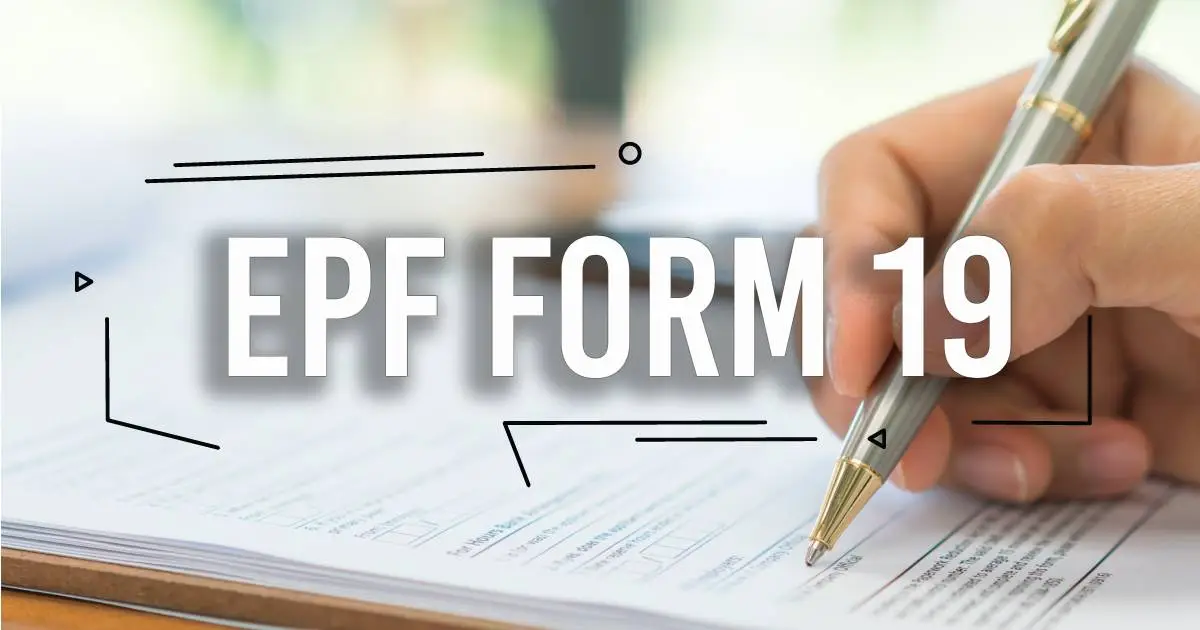Form 19: Its Purpose and Importance
Form 19 is a vital component in the English writing context, and understanding its purpose and importance is crucial for authors. This comprehensive guide aims to provide a thorough understanding of Form 19, enabling authors to utilize it effectively in their writing.
What is Form 19?

Form 19 is a standardized format used in English writing to ensure clear communication and effective message delivery. It serves as a framework for authors to structure their written work in a cohesive and organized manner.
Form 19 is commonly used in various situations, including academic writing, business correspondence, and professional reports. It provides a consistent structure that helps authors convey their ideas concisely and effectively.
The key elements of Form 19 include the purpose of writing, target audience, tone and style, and formatting and structure. By following these elements, authors can create well-structured and coherent written pieces.
The MECE Framework for Analyzing Form 19
The MECE (Mutually Exclusive, Collectively Exhaustive) Framework is a valuable tool for analyzing Form 19. It helps break down the form into distinct components, making it easier to comprehend and apply.
By applying the MECE Framework to Form 19, authors can ensure that their writing covers all necessary aspects and is logically organized. This framework ensures that each section of Form 19 is mutually exclusive, meaning it addresses a unique aspect, and collectively exhaustive, covering all necessary components.
Using the MECE Framework, authors can analyze the purpose of writing, target audience, tone and style, and formatting and structure. This systematic approach ensures that authors have a comprehensive understanding of each section and can effectively implement them in their writing.
The Subheadings of Form 19
Form 19 consists of several subheadings, each serving a specific purpose in guiding authors through the writing process. Understanding these subheadings is essential for authors to create well-crafted written pieces.
Purpose of Writing
The purpose of writing outlines the main objective or goal of the written piece. It helps authors focus their content and ensures that the message is clear and concise. The purpose can vary depending on the context, such as informing, persuading, or entertaining the audience.
Target Audience
The target audience refers to the specific group of people for whom the written piece is intended. Understanding the target audience is crucial as it helps authors tailor their language, tone, and style to effectively communicate with and engage the readers. Consideration of the audience’s knowledge, interests, and preferences is essential in creating impactful written content.
Tone and Style
The tone and style of writing contribute to the overall impact and effectiveness of the written piece. The tone refers to the attitude or emotion conveyed by the author, while the style encompasses the specific writing techniques and language choices used. Adapting the tone and style to match the purpose and target audience enhances the reader’s experience and ensures effective communication.
Formatting and Structure
Formatting and structure play a significant role in organizing and presenting written content. Following the guidelines for formatting, such as font size, spacing, and alignment, ensures consistency and readability. The structure refers to the logical flow and organization of the content, including the use of headings, subheadings, and paragraphs. A well-structured piece enables readers to navigate the information easily and comprehend the message effectively.
Common Mistakes to Avoid in Form 19
While Form 19 provides a framework for effective writing, there are common mistakes that authors should avoid to ensure the best possible outcome.
Neglecting the Purpose of Writing
One common mistake is not defining the purpose of writing in Form 19. Authors may overlook the importance of clearly stating their objective or goal, resulting in a lack of focus and a confusing message. To avoid this mistake, authors should take the time to clearly define their purpose and ensure that all content aligns with it.
Ignoring the Target Audience
Another common mistake is disregarding the target audience when writing in Form 19. Authors may fail to consider the knowledge, interests, and preferences of their intended readers, leading to a disconnect and ineffective communication. To avoid this mistake, authors should conduct audience research and tailor their language, tone, and style to resonate with their target audience.
Inconsistent Tone and Style
Inconsistency in tone and style can undermine the impact of a written piece in Form 19. Authors may unintentionally switch between different tones or use inconsistent writing techniques, resulting in a disjointed reading experience. To prevent this mistake, authors should maintain a consistent tone throughout their writing and employ a cohesive style that aligns with the purpose and target audience.
Neglecting Formatting and Structure
Formatting and structure are often overlooked, but they play a crucial role in enhancing readability and comprehension in Form 19. Authors may neglect to follow the formatting guidelines or fail to organize their content logically and coherently. To avoid this mistake, authors should pay attention to formatting details such as font size, spacing, and alignment. They should also structure their content using headings, subheadings, and paragraphs to create a clear and organized flow of information.
Frequently Asked Questions
Here are some frequently asked questions related to Form 19:
What happens if I don’t follow Form 19?
If you don’t follow Form 19, your writing may lack structure and coherence, making it harder for readers to understand your message. Adhering to Form 19 helps ensure clarity and effective communication.
Can I use a different format instead of Form 19?
While Form 19 is a widely accepted format, there may be instances where alternative formats are appropriate. However, it’s important to consider the requirements and expectations of the specific writing context before deviating from Form 19.
How can I determine the appropriate tone for my writing?
Determining the appropriate tone depends on factors such as the purpose of writing and the target audience. Consider the desired emotional impact and the level of formality required to guide your choice of tone.
Are there any exceptions to the formatting guidelines in Form 19?
While there may be some flexibility in formatting guidelines, it’s important to ensure consistency and readability. Deviating too much from the standard guidelines may confuse readers.
Can Form 19 be used in creative writing?
Form 19 is primarily designed for informative and persuasive writing. While it may not be the ideal format for creative writing, elements of Form 19, such as structure and organization, can still be beneficial in crafting coherent narratives.
Is Form 19 applicable to all types of English writing?
Form 19 is commonly used in academic, business, and professional writing. However, its applicability may vary depending on the specific requirements and expectations of different writing contexts. It’s essential to consider the appropriate format for each situation.
Conclusion
Understanding Form 19 is essential for English authors as it provides a structured framework for effective communication. By comprehending the purpose, target audience, tone and style, and formatting and structure of Form 19, authors can create well-crafted written pieces that resonate with their readers. Avoiding common mistakes and following the guidelines outlined in Form 19 allows authors to enhance the clarity, coherence, and impact of their writing. By utilizing the knowledge gained from this comprehensive guide, authors can elevate their writing skills and effectively convey their ideas to their intended audience.




